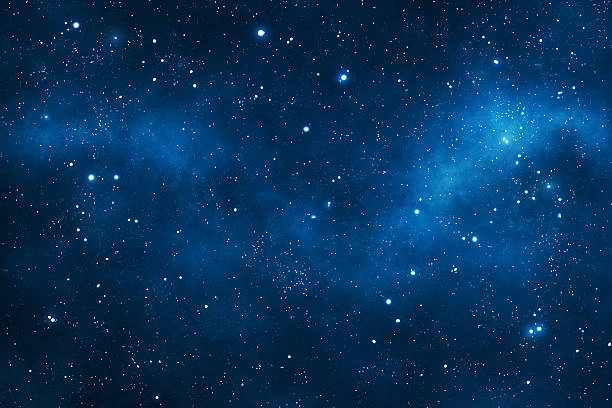Stars are always communicating with humanity; they are shining, little lamps in the great darkness of the night. For as old as Stars-923 is, it has a story as traditional as every other big name out there. Beginning with their birth and ending with their death they inspire scientists and writers observing the heavens and exploring the cosmos. Yet Stars-923 is humanly nameless although they are distant; these entities signify the element of generic accompaniment for a prodigious dream. This article unravels every aspect of stars from their importance in the universe to how they define existence in its entirety.
The Birth of Stars
Stars are created in vast molecular cloud, or stellar nursery, made chiefly of hydrogen. Many of these clouds fragmented under gravitational pull, and at the core; material compression leads to the formation of a protostar. As soon as the core temperature is attained, nuclear fusion begins, and a star forms.
This matter can take millions of year to nuclear fuse and become a star. Hertzsprung found that the amount of material monitored in the molecular cloud define stellar size, mass and lifetime. Red dwarfs are example of stars, which can burn during many billions of years, while other, more massive stars burn during hundreds of millions of years, but, at the same time, обладают более насыщенной жизнью.
Like most of the stars, Stars-923 formed in such an environment, and experienced diverse proceedings that determines its formation and development phases. Knowledge of these activities enables us make better sense of other general activities prevalent in the universe.
What is the Numbering of Stars

Numbering of stars is a technique that scientists employed when naming stars to make it easy for them to locate stars in the vast universe. They are also given unique identifier according to various cataloging system that has been assigned to each star. The best-known classification system of stars is called the Henry Draper Catalogue, which assigns HD numbers to stars.
It is likely that Stars-923 exists in a particular catalog that assists astronomers in monitoring and analyzing it. These numbers are vital in the branch of astronomy because they give a sequential pattern for the identification of objects in the heavens despite the various research studies that may be made on the subject.
What are the Numbers of Stars
The world stars are even beyond comprehension as to their entire numerical value. Our own galaxy, the Milky Way, is inferred to host between one hundred and four hundred billion stars. Speaking of comprehensiveness of the observable universe the amount of stars is in trillions, and reaching into septillions in some estimates.
Stars-923 is one among these countless stars which a human can come across in his life time. It is a special number that helps astronomers direct their scientist investigations on it and reveal special facets of its properties and activities. The two forms of number are essential when it comes to controlling figures involved in large numbers typical of astronomical details.
How to Calculate Star Number
Determining a star number requires understanding of its position and attributes as seen from various surveys as well as cataloging system. Contemporary instruments provide the information on the intensity of star shine, position, and its stellar class. The obtained data is further used to assign a number to the star in question.
It is likely that the number attributed to Stars-923 was settled according to various of its features and its location at the sky. From here we see how these numbers are assigned and appreciate the effort put into classifying and astronomically studying the world.
How Do You Read Star Numbers
In order to read star numbers the reader has to have knowledge of the cataloging system used. In other words every catalog has its rules as to how the information therein could be arranged and presented. For example, the Henry Draper Catalogue is labelled with the prefix of “HD” and a numerical sequence, the Hipparcos catalog of stars is labelled with “HIP”.
The number of Stars-923 can be identified according to what catalog it is in?. This allows the astronomers to get more information about the star properties and histories that will be of immense value in the future.
How Do You Read a Star Code
In fact star codes are similar with a star numbers may even contain more information regarding the stars such as its position its intensity and its spectral class. All these codes give one an exhaustive account of the stellar features and make up of the star.
Stars-923 code would reveal its content and provide certain information on how the system operated. It thus becomes important to learn star codes as astronomers’ compare and contrast various stars in their body of knowledge.
What is 9 in Numerology
When it comes to numerology the number 9 symbolizes the end, wisdom and humanitarian. Some say it’s associated with strength and spirituality because it mark the completion of one cycle and the start of a new one.
Although numerology is not an exact science, it can provide a creative insight when regarding the value of numbers. The use of the number 9 incorporated in Stars 923 might also enchant some people that believe in numerology.
What is My Birth Date Number
Your birth date number is obtained by adding the individual digits of the birth date and thus getting a single digit. For instance if your date of birth is 14th July 1990
Here, your birth date figure will be 4. It is thought to be numerology associated with a certain number and traits and characteristics that come with it.
Is Numerology 9 Lucky
All over the world, most people believe that the number nine is lucky. In this case it represents life, life cycle and wholeness because of its continuous cycle. In Chinese culture, the number has gained terrific importance; the number 9 is as popular as power and influence symbolized by the Emperor.
Like with many other Chinese stars, the number 9 in the Stars-923 name could be considered an accidental bonus, which only enhances the star’s aura of mystery.
Which is the Luckiest Number
Westerners may have a luckiest number but what is considered lucky differs from one culture to the other. The numeral 7 is regarded as a lucky number in the realms of Western civilization largely because the numeral is associated with religious and history significance. On the other hand, the number 8 is considered lucky since in Chinese when you say it, it sounds like the Chinese word for ‘prosper’.
, perhaps, many would not ascertain that Stars-923 is a lucky name because the number 923 has no especially favorable symbolism, but it is another story belonging to the classification of numbers associated with celestial objects.
Which five numbers are considered most fortunate
The top 5 luckiest numbers often cited across various cultures include:
7 – Lucky and more to do with spirituality.
8 – A gold ring that represents riches and good fortunes most especially among Chinese people.
9 – symbolizing wholeness and life-duality.
3 – This signifies it when seen in the perspective of the three dualistic lines of harmony and balance.
13 – In some cultures it is even believed to be a symbol of good luck – this is rather opposed to the traditions mentioned in the tales.
Numerology and astronomy fans can certainly find something interesting about Stars-923’s affiliation with these numbers.
What is the most powerful number you can use in Islam?
Seven has a religious value in the Islamic world. It is recited many times in Quran and people relate it with lots of religious activities and procedures.
The fact that the Stars-923 term does not relate to the Islamic context does not make conversation interesting; people from different parts of the world love numbers and their symbolism.
Classification and Types of Stars

They are grouped according to their spectroscopic properties and sometimes their temperature. The most well-known method of classification is the so called the Morgan-Keenan (MK) system: Class O stars are hottest and class M stars are coldest.
Stars-923 is classified into any of these categories which are; that are at different stages of stellar evolution. Knowledge of these classification makes it possible for astronomers to forecast the age, mass and future of star.
Neutron Stars and Black Holes
Black holes and neutron stars are two examples of a stellar evolution stage. When a very large star deplete its nuclear cores then it might undergo explosion known as supernova explosion, the left over is either a neutron star or it collapses to a black hole is known as star thinking.
Same as with any star, the destiny of Stars-923 will be governed by its and its content mass. Studying these final states is as useful as studying other stages of stellar evolution because it kindles interest and respect of the people to the cyclicality of real life and the world.
Stars-923 part in the Galaxy
Stars-923 has a special place in the galaxy, as in any work. It have various relations with neighboring stars, affect them by gravitational force or emitting radiation which play an important part in formation and behavior of this stellar environment.
From the analysis of the research data of Stars-923, astronomers can get the detailed interactions of stars and big structures, including stars formations like clusters and galaxies.
Telescopes and Observatories
Stasrs cannot be studied without the use of telescope and little observatory instruments. Ground based facilities such as Mauna Kea Observatories, Astrophysical observatories give images and data of objects in the universe while space based observatories, apherrn space telescopes like Hubble Space Telescope.
Stars-923 could have been analyzed with these sophisticated devices; therefore, the properties of the specific star along with its activity can be described quantitatively.
Navigation by Stars
Going further, stars navigation has been used for centuries by sailors and explorers. Thus, the index of the northern hemisphere Polaris, the North Star, has always helped us to determine the direction.
Even though Stars-923 is not as bright as Polaris does help contribute to the overall constellation that mankind has ‘mapped out’ and used to navigate this world.
Future Frontiers in Astronomy
The investigation and particularly Stars-923 requires further exploration with the development of technology and space science. Next missions like James Webb Space Telescope will reveal new aspects of the universe and billions of stars that exist in it.
The handle Stars-923 is only one type in the future years that astronomers have to vent on more pulling the situation into more extensive advancement.
Science of Importance of Stars-923
Stars-923 like all stars, has its unique importance in the univerce and particularly in the sphere of astronomy. These qualities as applied to analysis of singles enable us in explanation of events in stellar evolution, galaxies, and the universe at large.
Stars have fascinated humanity for millennia, and Stars-923 is no exception. Its story, from birth to its role in the galaxy, offers a glimpse into the wonders of the universe.
Ready to learn more about the fascinating world of stars? Join the community of astronomy enthusiasts and deepen your knowledge of the universe.

